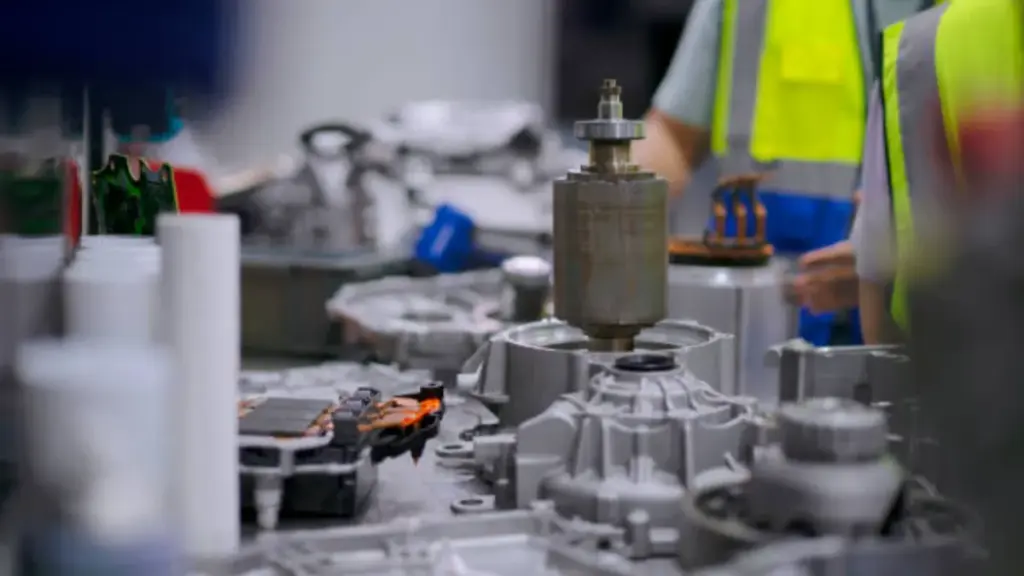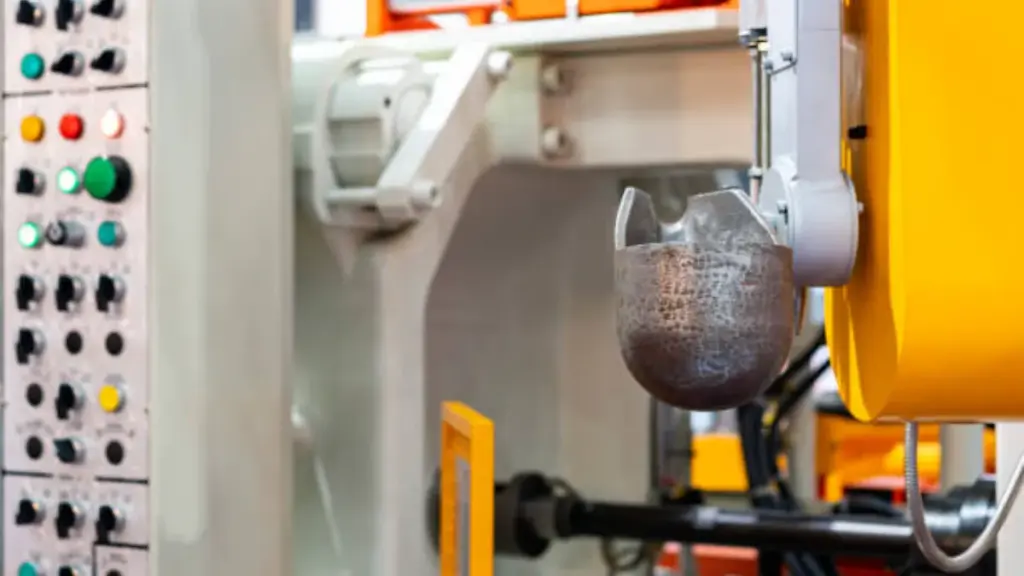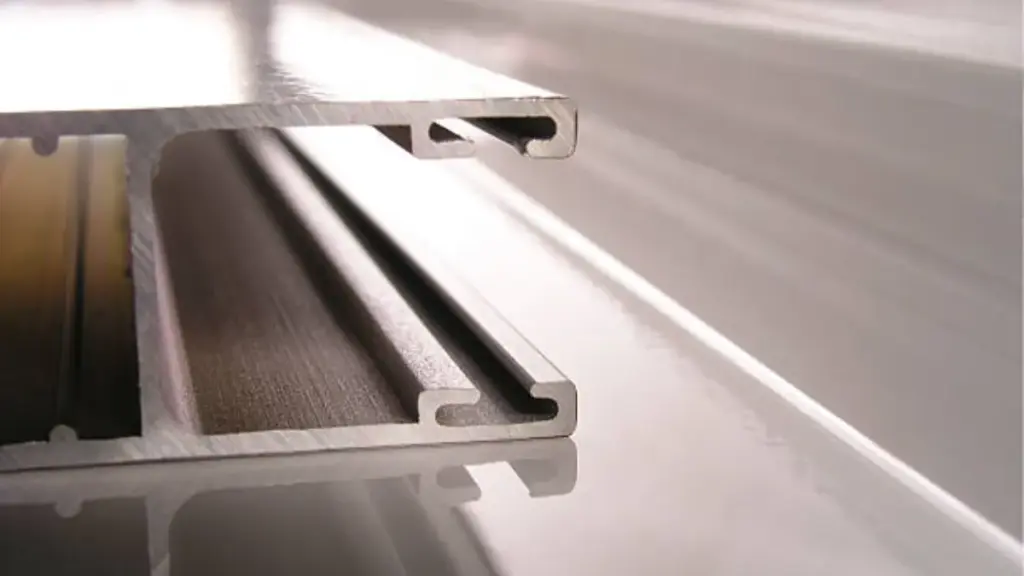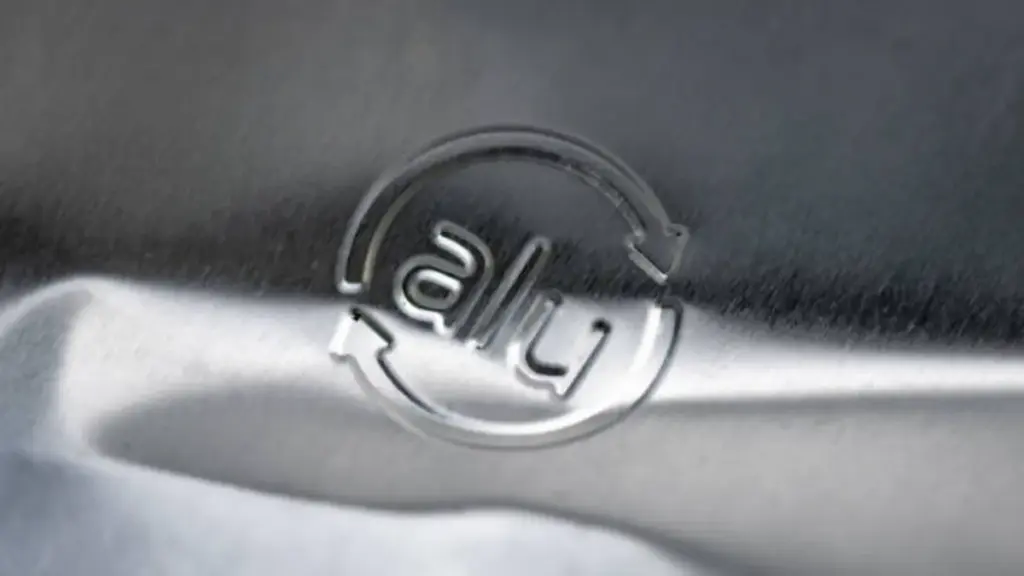다이 캐스팅은 금속 부품을 생산하는 널리 사용되는 제조 공정입니다. 고압을 사용하여 용융 금속을 금형 캐비티에 밀어 넣는 것. 엄격한 공차로 복잡한 형상을 생산할 수 있는 다재다능하고 비용 효율적인 방법입니다.. 이 기사에서는 다이캐스팅의 기본 사항을 살펴보겠습니다., 사용된 재료, 다양한 다이캐스팅 공정, 산업 전반에 걸친 응용.
다이캐스팅이란??
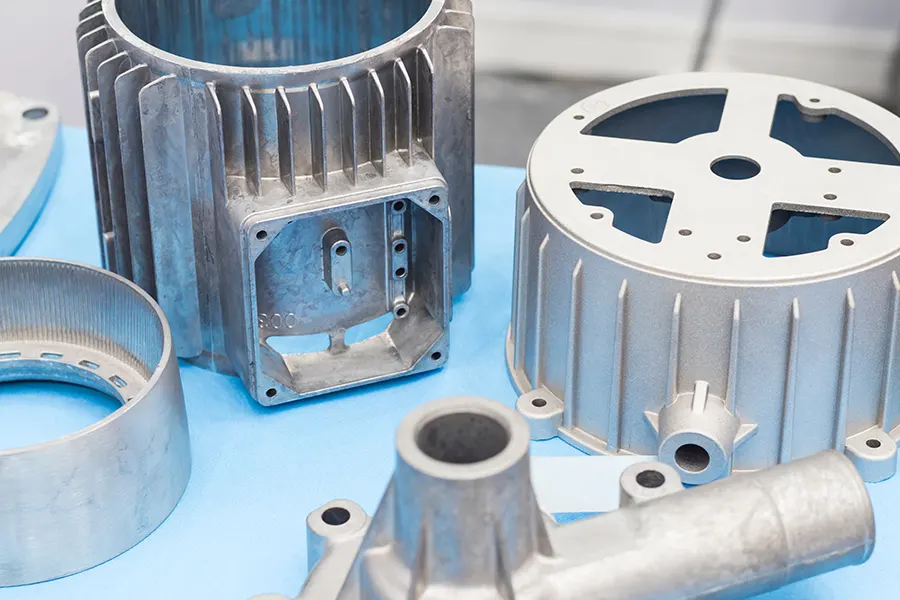
다이캐스팅 포함하는 제조 공정이다 고압에서 금형 캐비티에 용융 금속을 주입하는 것, 그래서 전통적인 다이 캐스팅이라고도 불립니다. 고압 다이캐스팅. 그런 다음 금속이 냉각되어 응고됩니다., 결과적으로 금형의 모양과 치수와 밀접하게 일치하는 주조 부품이 생성됩니다.. 이 공정은 생산에 적합합니다. 대용량, 치수 정확도가 뛰어난 복잡한 부품.
사형 주조나 인베스트먼트 주조와 같은 다른 제조 방법에 비해, 다이캐스팅은 여러 가지 장점을 제공합니다.. 얇은 벽과 복잡한 디테일을 갖춘 부품 생산이 가능합니다., 추가 가공의 필요성 감소. 추가적으로, 다이 캐스팅은 생산 속도가 더 높습니다, 인건비 절감, 더 엄격한 허용 오차를 달성할 수 있습니다..
다이캐스팅의 장점과 단점
다이캐스팅의 장점
- 높은 생산성: 다이캐스팅은 많은 수의 부품을 신속하게 생산할 수 있습니다., 결과적으로 시간과 비용이 절약됩니다..
- 치수 정확도: 다이캐스팅을 통해 제작된 부품은 원하는 사양과 매우 유사합니다., 추가 가공의 필요성 감소.
- 비용 효율적인 솔루션: 다이 캐스팅으로 인건비 및 후가공 요구 사항 최소화, 장기적인 비용 절감 제공.
- 복잡한 기하학: 다이캐스팅을 통해 복잡한 디자인과 복잡한 부품 생산이 가능합니다..
다이캐스팅의 단점
- 높은 초기 툴링 비용: 다이캐스팅용 금형을 만드는 데 비용이 많이 들 수 있습니다., 특히 소규모 생산의 경우.
- 크기 제한: 다이캐스팅은 중소형 부품에 더 적합합니다..
- 제한된 금형 수명: 고압사출을 반복하면 금형이 마모될 수 있습니다., 교체 또는 수리가 필요한 경우.
- 제한된 재료 선택: 다이 캐스팅은 다른 방법에 비해 재료 선택에 제한이 있을 수 있습니다..
다이캐스팅에 사용되는 재료
다양한 금속 및 합금으로 다이캐스팅이 가능합니다., 포함 알류미늄, 아연, 그리고 마그네슘. 각 합금은 고유한 특성과 장점을 제공합니다., 다양한 응용 분야에 적합하게 만들기.
알루미늄 다이 캐스팅
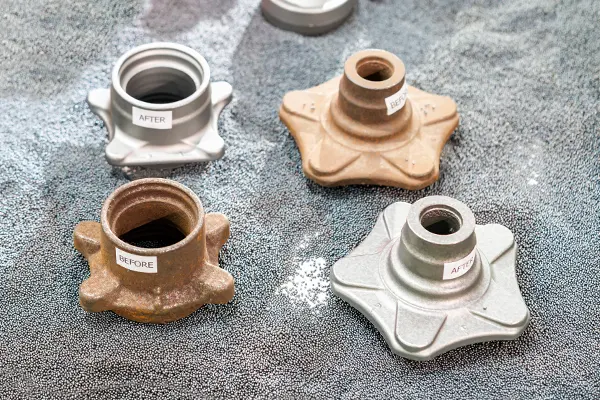
알루미늄은 다이캐스팅에 가장 일반적으로 사용되는 금속 중 하나입니다. 우수한 중량 대비 강도 비율 및 내식성. 그것은 경량, 아직 튼튼한, 자동차 부품에 이상적, 전자 인클로저, 소비재.
알루미늄 다이캐스팅은 여러 가지 장점을 제공합니다., 높은 열전도율과 같은, 좋은 가공성, 우수한 치수 안정성. 또한 복잡한 형상의 벽이 얇은 부품 생산도 가능합니다., 추가 가공 작업의 필요성 감소.
아연 다이캐스팅

아연은 다이캐스팅에 널리 사용되는 또 다른 선택입니다., 주조성이 우수하고 녹는점이 낮은 것으로 알려져 있습니다.. 일반적으로 전기 커넥터 생산에 사용됩니다., 장식용 하드웨어, 자동차 부품.
아연 다이 캐스팅 제공 우수한 유동성과 정밀한 주조성, 복잡하고 얇은 벽의 부품 생산 가능. 또한 내식성이 우수하고 표면 마감이 우수합니다., 많은 응용 분야에서 비용 효율적인 옵션이 됩니다..
황동 다이 캐스팅

놋쇠, 구리와 아연의 합금, 독특한 특성으로 인해 다이캐스팅에 널리 사용됩니다.. 황동 다이캐스팅은 우수한 내식성을 제공합니다., 좋은 기계적 성질, 높은 가공성. 그들은 일반적으로 미적 매력과 기능적 특성을 모두 요구하는 다양한 응용 분야에 사용됩니다.. 황동 다이캐스팅의 일반적인 응용 분야에는 배관 설비가 포함됩니다., 장식용 하드웨어, 전기 커넥터, 그리고 악기.
마그네슘 다이 캐스팅

마그네슘은 무게 대비 강도가 뛰어난 경량 금속입니다., 무게 감소가 중요한 응용 분야에 이상적입니다.. 항공우주 산업에서 자주 사용됩니다., 자동차 부품, 그리고 전자 기기.
마그네슘 다이 캐스팅으로 탁월한 치수 안정성 제공, 높은 열전도율, 우수한 전자파 차폐 특성. 또한 부식에 대한 강한 저항성을 제공하며 쉽게 재활용할 수 있습니다., 환경 친화적인 선택이 되도록.
3 다이 캐스팅 공정의 유형
틀림없이! 콜드 챔버 다이캐스팅 비교표는 다음과 같습니다., 핫 챔버 다이캐스팅, 및 진공 다이캐스팅:
| 콜드 챔버 다이 캐스팅 | 핫 챔버 다이 캐스팅 | 진공 다이 캐스팅 | |
| 적합한 재료 | 알류미늄, 마그네슘, 구리, 다양한 합금 | 아연, 선두, 주석 합금 | 알류미늄, 마그네슘, 구리, 다양한 합금 |
| 조작방법 | 용융 금속은 별도의 용광로에서 래핑됩니다. | 용융 금속이 금형에 직접 펌핑됩니다. | 용융된 금속을 밀봉된 챔버에 붓습니다. |
| 공정 온도 | 더 높은 온도 | 낮은 온도 (녹는점 근처) | 낮은 온도 (녹는점 이하) |
| 부품의 복잡성 생산 | 더 두꺼운 벽으로 더 복잡한 부품 생산 가능 | 더 간단하고 작은 부품에 적합 | 복잡한 부품에 적합 |
| 장비 비용 | 더 비싼 장비 설정 필요 | 보다 저렴한 장비 설정 필요 | 적당한 장비 설정 필요 |
| 산업에서의 용도 | 자동차, 항공우주, 소비재, 전자 제품, 등. | 소형 가전, 배관 구성 요소, 등. | 항공우주, 자동차, 의료, 전자 기기, 등. |
위 표는 일반적인 비교이며 각 항목의 모든 측면을 다루지는 않을 수 있습니다.
콜드 챔버 다이 캐스팅
콜드챔버 다이캐스팅이란?? 콜드 챔버 다이캐스팅, 용융 금속을 별도의 챔버에 부은 다음 플런저를 사용하여 금형 캐비티에 주입합니다.. 이 방법은 융점이 높은 합금에 적합합니다., ~와 같은 알루미늄과 구리.
콜드 챔버 다이 캐스팅은 일반적으로 자동차 부품 생산에 사용됩니다., 항공우주 부품, 고압이 필요한 대형 주물.
핫 챔버 다이 캐스팅
핫챔버 다이캐스팅이란?? 핫 챔버 다이캐스팅은 주입 메커니즘이 용광로에 통합되는 공정입니다.. 용탕이 지속적으로 공급됩니다., 별도의 챔버가 필요하지 않음. 이 방법은 융점이 낮은 합금에 적합합니다., ~와 같은 아연과 마그네슘.
핫 챔버 다이캐스팅은 종종 소형 제품 생산에 사용됩니다., 복잡한 부분, 전자 커넥터와 같은, 소형 자동차 부품, 그리고 가전제품.
진공 다이 캐스팅
진공 다이 캐스팅은 사출 단계에서 진공이 적용되는 전통적인 다이 캐스팅 공정의 변형입니다.. 이는 갇혀 있는 가스를 제거하고 최종 주조물의 다공성을 줄이는 데 도움이 됩니다., 결과적으로 기계적 특성이 향상됩니다..
진공 다이캐스팅은 고품질이 요구되는 산업에서 널리 사용됩니다., 결함 없는 주조가 중요합니다., 항공우주와 같은, 의료, 정밀공학.
다이캐스팅 공정
단계 #1: 금형 설계
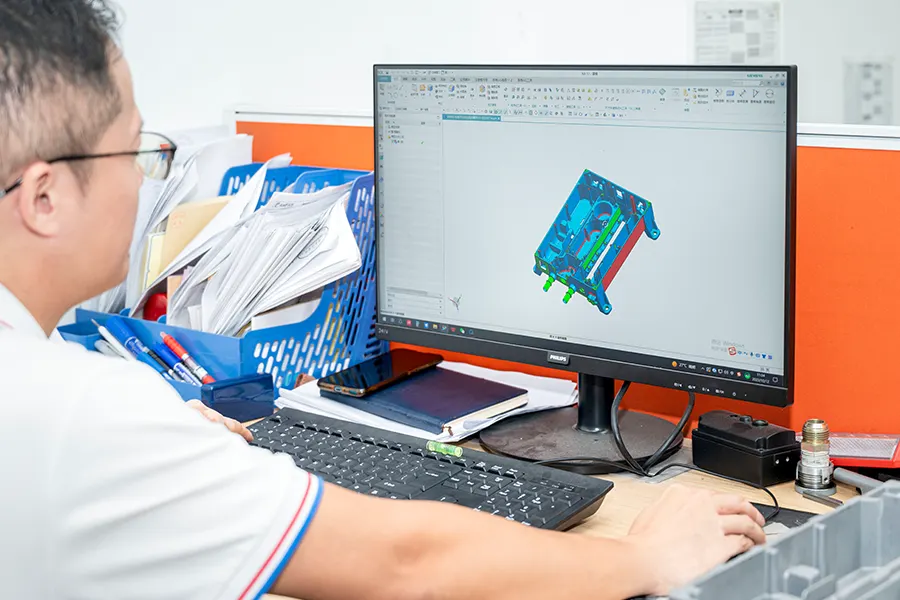
다이캐스팅 공정의 첫 번째 단계는 금형의 설계 및 제작입니다.. 금형은 최종 부품의 원하는 모양과 치수를 유지하면서 높은 압력과 온도를 견딜 수 있도록 설계되어야 합니다..
단계 #2: 캐스팅 준비
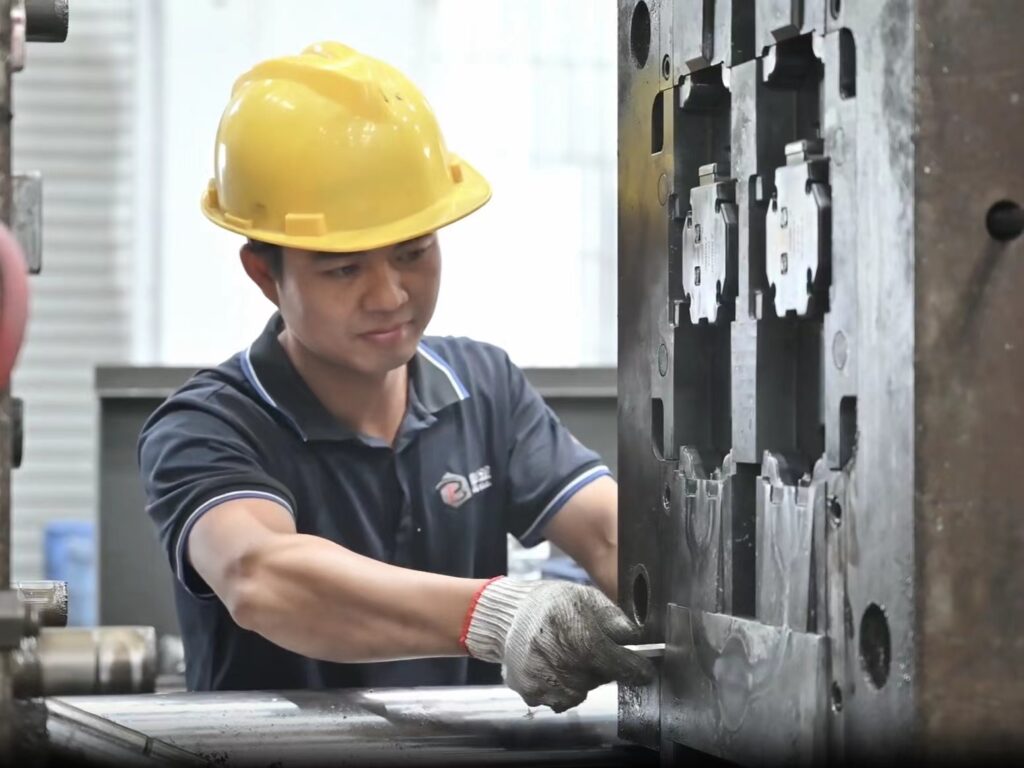
금형이 준비되면, 주조 공정 중 적절한 열 전달을 보장하기 위해 원하는 온도로 예열됩니다.. 달라붙는 것을 방지하고 부품 제거를 용이하게 하기 위해 필요한 이형제 또는 코팅을 금형에 적용합니다..
단계 #3: 주입

플런저 또는 유압 피스톤을 사용하여 용융 금속을 고압으로 금형 캐비티에 주입합니다.. 높은 압력은 금형을 완전히 채우는 데 도움이 되며 우수한 치수 정확도와 표면 조도를 보장합니다..
단계 #4: 냉각 및 응고
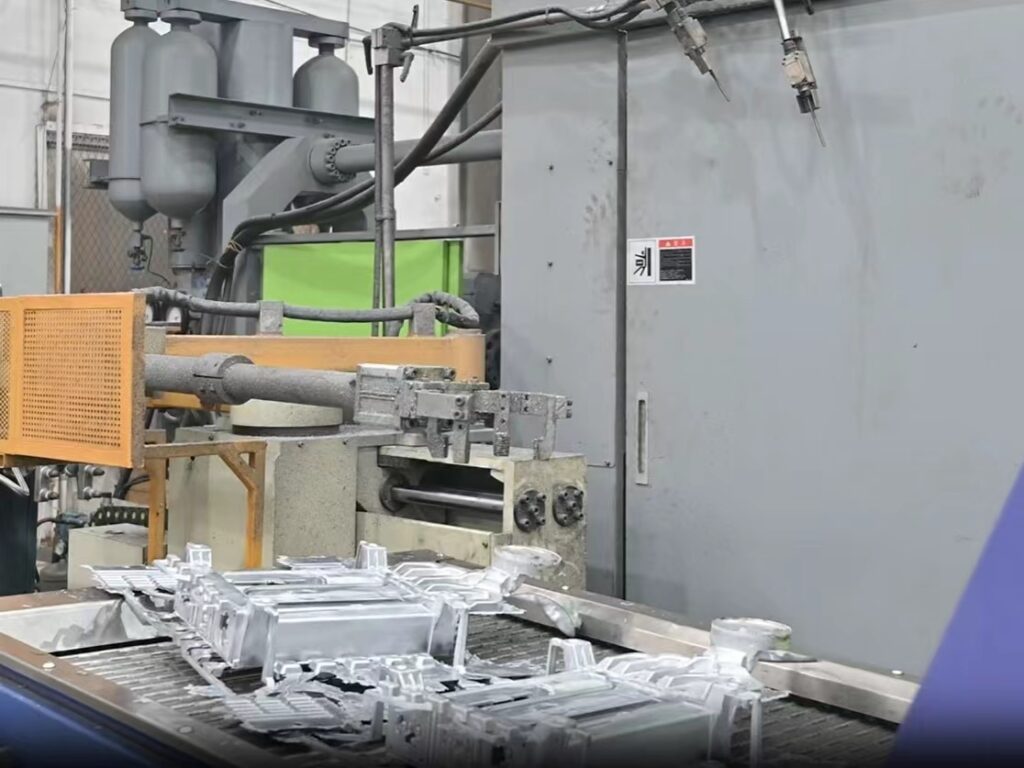
주사 후, 용융 금속은 금형 캐비티 내에서 냉각되어 응고됩니다.. 냉각 시간은 재료 및 부품 형상에 따라 다릅니다., 그러나 수축이나 다공성과 같은 결함을 방지하려면 냉각 속도를 제어하는 것이 중요합니다..
단계 #5: 탈형 / 제거
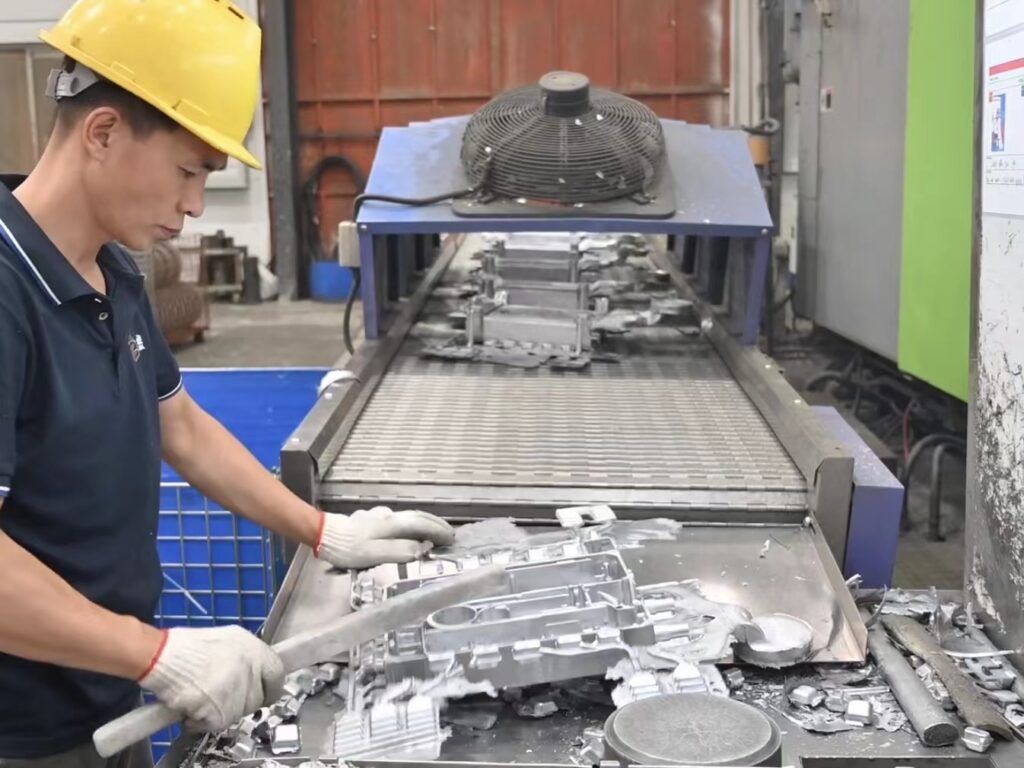
부품이 굳어지면, 금형이 열렸습니다, 캐스팅이 제거되었습니다.. 탈형 중에 부품이 손상되지 않도록 주의해야 합니다..
단계 #6: CNC 가공 / 표면 처리

어떤 경우에는, 원하는 모양을 얻으려면 추가 가공 작업이 필요할 수 있습니다., 치수, 또는 표면 마무리. 이 작업은 다음을 사용하여 수행할 수 있습니다. CNC 가공, 교련, 태핑, 또는 기타 후처리 기술. 도금과 같은 표면 처리, 그림, 또는 부품의 외관과 내식성을 향상시키기 위해 분체 코팅을 적용할 수도 있습니다..
산업 전반에 걸친 다이 캐스팅 애플리케이션

자동차 산업
다이 캐스팅은 다음과 같은 중요한 역할을 합니다. 자동차 산업 엔진 부품과 같이 가벼우면서도 내구성이 뛰어난 부품을 제공함으로써, 변속기 하우징, 그리고 신체 구성 요소. 연비향상에 도움이 됩니다, 배출량을 줄이다, 전반적인 차량 성능을 향상시킵니다..
항공우주 산업
항공우주산업에서는, 다이캐스팅은 고강도가 요구되는 중요한 부품을 생산하는 데 사용됩니다., 치수 정확도, 그리고 가벼운 특성. 터빈 블레이드와 같은 부품, 항공기 구조 부품, 엔진 하우징은 일반적으로 다이캐스팅 공정을 통해 제조됩니다..
전자 및 통신 산업
다이 캐스팅은 다음과 같은 분야에 널리 사용됩니다. 전자 및 통신 산업 커넥터와 같은 부품 생산, 하우징, 그리고 방열판. 이 프로세스는 복잡한 디자인을 허용합니다., 우수한 방열, 및 전자파 차폐 특성.
소비재 및 가전제품
많은 소비재 및 가전제품은 다양한 부품 생산을 위해 다이캐스팅에 의존합니다.. 에서 주방 가전부터 전동 공구까지, 다이캐스팅으로 내구성 보장, 힘, 이러한 제품에 필요한 정확한 치수.
의료 및 헬스케어 부문
의료 및 헬스케어 부문에서는 수술 도구 생산에 다이캐스팅을 활용합니다., 의료기기, 및 장비 구성 요소. 다이캐스팅은 필요한 정확성을 제공합니다., 청결, 이 산업에서 요구되는 멸균성과 멸균성.
결론
다이캐스팅은 복잡하고 고품질의 금속 부품을 생산할 수 있는 다양하고 널리 사용되는 제조 공정입니다.. 다이캐스팅의 기본 이해, 사용된 재료, 다양한 다이캐스팅 공정, 산업 전반에 걸쳐 적용하는 것은 제조 또는 엔지니어링 분야에 종사하는 모든 사람에게 필수적입니다.. 다이캐스팅의 장점과 성능을 활용하여, 제조업체는 오늘날 산업의 까다로운 요구 사항을 충족하는 부품을 생산할 수 있습니다..
자주 묻는 질문
1. 다이캐스팅에서 플래시란 무엇입니까??
다이캐스팅의 플래시는 주조 과정에서 다이의 두 반쪽 사이에 압착되는 과잉 재료를 의미합니다., 주조 표면에 원치 않는 돌출부 생성.
2. 중력다이캐스팅이란??
중력 다이캐스팅, 또는 영구 주형 주조, 금형 캐비티를 채우는 데 도움이 되도록 중력을 사용하여 용융 금속을 재사용 가능한 금형에 붓는 주조 공정입니다., 고품질의 주조 결과.
3. 알루미늄 다이캐스팅이란??
알루미늄 다이캐스팅은 용융된 알루미늄 합금을 고압으로 금형 캐비티에 주입하여 다양한 산업 분야에 사용되는 정밀하고 가벼운 주조물을 생산하는 공정입니다..
4. 몰드캐스팅이란??
금형 주조는 금형을 활용하여 금속이나 플라스틱과 같은 용융 재료를 원하는 형태로 형성하고 응고시키는 주조 공정을 포괄하는 광범위한 용어입니다..
5. 다이 캐스팅이란 무엇에 사용됩니까??
다이 캐스팅은 자동차와 같은 산업에서 널리 사용됩니다., 항공우주, 빠른 생산 속도로 뛰어난 치수 정확성을 갖춘 복잡하고 고품질의 금속 부품을 생산하는 전자 장치.
6. 다이캐스팅에 사용되는 가장 일반적인 금속은 무엇입니까??
다이캐스팅에 사용되는 가장 일반적인 금속은 알루미늄입니다., 아연, 그리고 마그네슘. 이 금속은 다이캐스팅 공정에 탁월한 특성을 제공합니다., 좋은 유동성과 같은, 열전도율, 그리고 무게 대비 강도 비율. 기타 금속, 황동과 구리를 포함한, 다이캐스팅에도 사용, 비록 알루미늄보다 덜 일반적이지만, 아연, 그리고 마그네슘.

